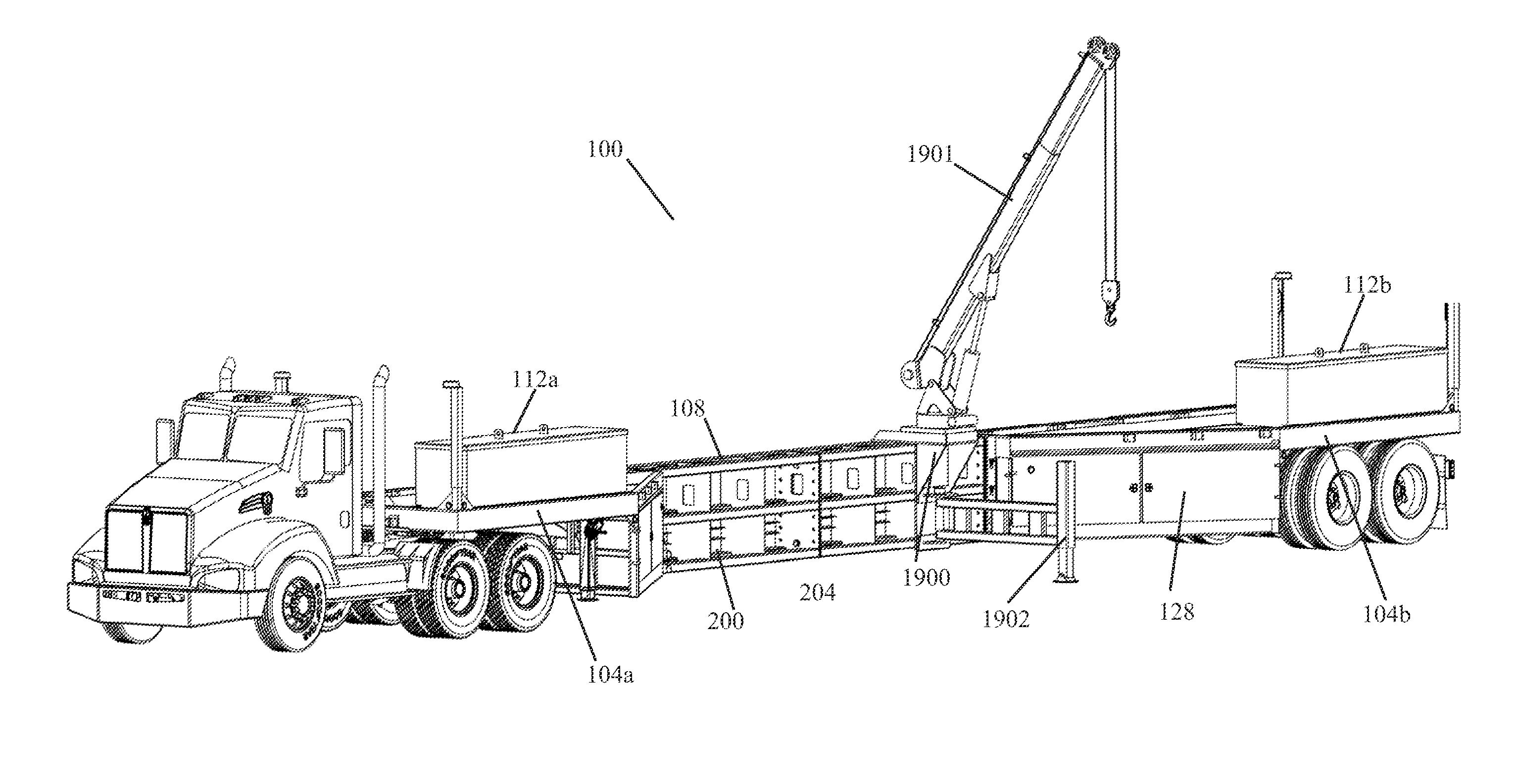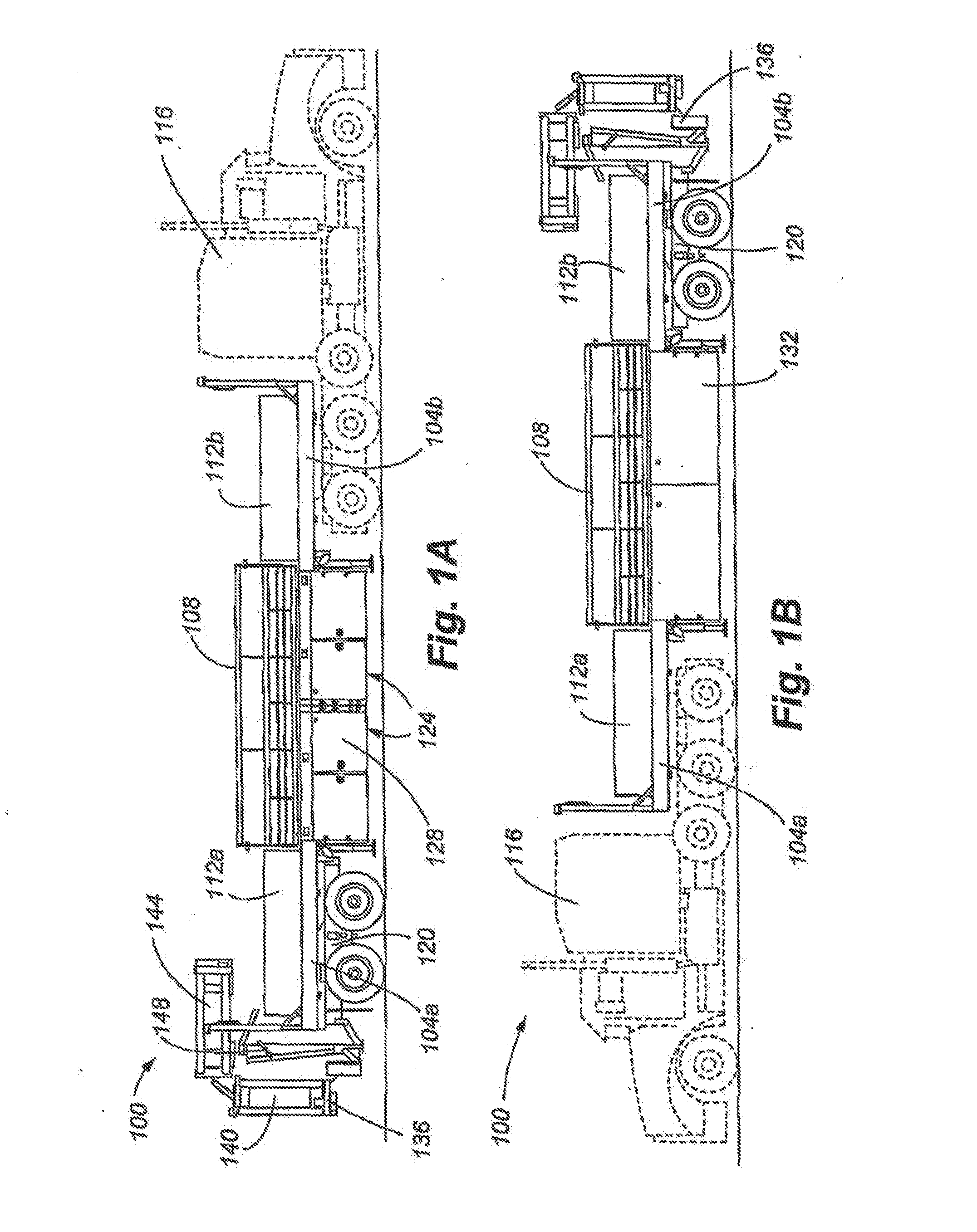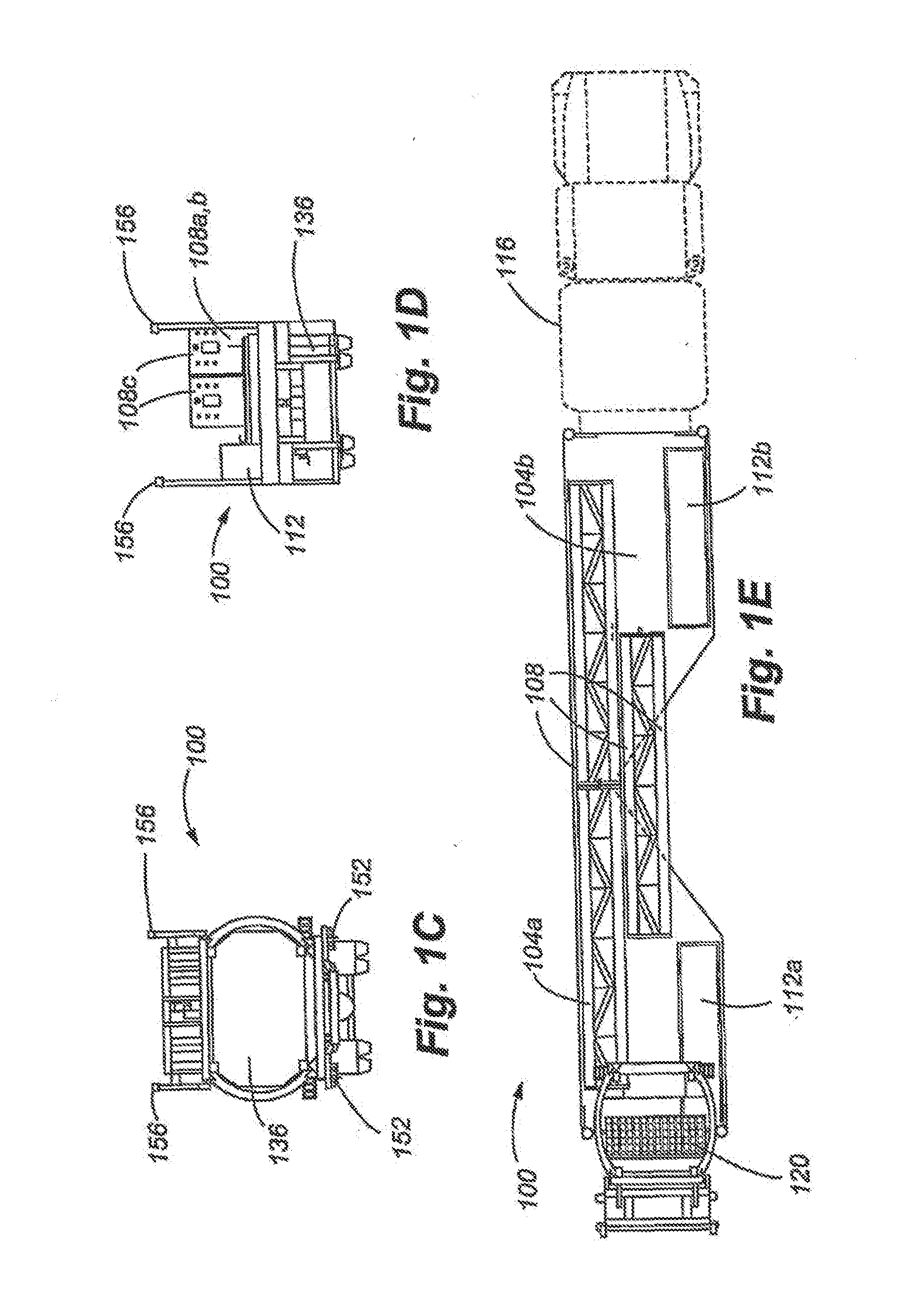Mobile barrier
a technology of mobile barriers and barriers, applied in the direction of transportation items, traffic signals, roads, etc., can solve the problems of exposing workers to significant accident risk, providing only limited protection to road construction workers. , to achieve the effect of reducing the ability of passing traffic, reducing rubber-necking and secondary incidents, and improving protection
- Summary
- Abstract
- Description
- Claims
- Application Information
AI Technical Summary
Benefits of technology
Problems solved by technology
Method used
Image
Examples
Embodiment Construction
[0067]Embodiments of the present invention are directed to a mobile traffic barrier. In one embodiment, the mobile traffic barrier includes a number of inter-connectable wall sections that can be loaded onto a truck bed. The truck bed itself includes two (first and second) platforms. Each platform includes a king pin (not shown); the king pin providing a connection between the selected platform and either a caboose or a tractor. By enabling the tractor to hook at either end, the trailer can incorporate a rigid fixed wall that is open to the right or left side of the road, depending on the end to which the tractor is connected. The side wall and the ends of the trailer define a protected work area for road maintenance and other operations. The tractor and caboose may exchange trailer ends to change the side to which the wall faces. The dual-hookup, fixed-wall design can enable and incorporate compartments (in the platforms) for equipment and storage, onboard power for lighting, venti...
PUM
 Login to View More
Login to View More Abstract
Description
Claims
Application Information
 Login to View More
Login to View More - R&D
- Intellectual Property
- Life Sciences
- Materials
- Tech Scout
- Unparalleled Data Quality
- Higher Quality Content
- 60% Fewer Hallucinations
Browse by: Latest US Patents, China's latest patents, Technical Efficacy Thesaurus, Application Domain, Technology Topic, Popular Technical Reports.
© 2025 PatSnap. All rights reserved.Legal|Privacy policy|Modern Slavery Act Transparency Statement|Sitemap|About US| Contact US: help@patsnap.com



